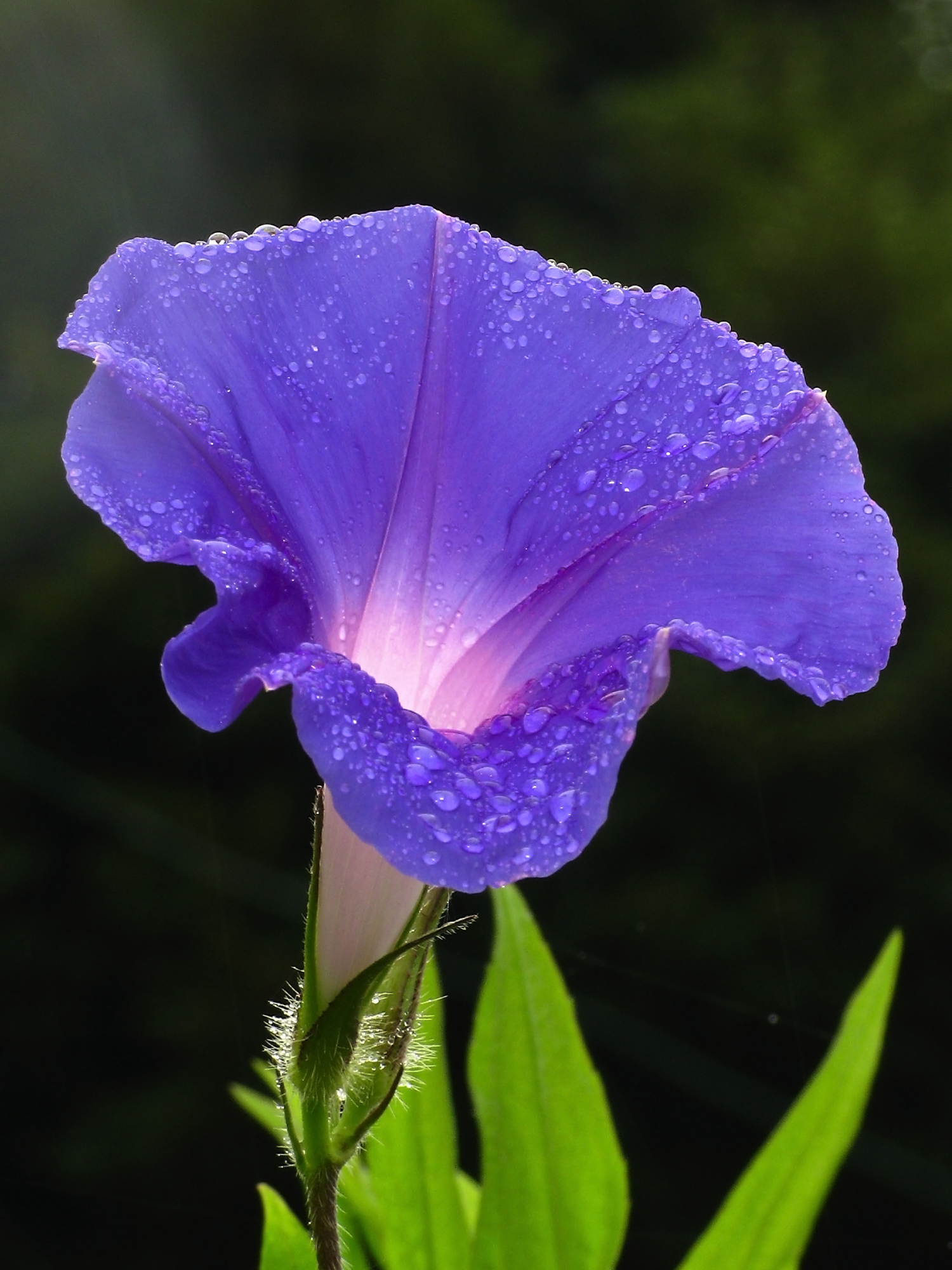|
Convolvulus
''Convolvulus'' is a genus of about 200 to 250''Convolvulus''. Flora of China.''Convolvulus'' The Jepson eFlora. 2013. species of s in the family ,Parnell, J. and Curtis, T. 2012. ''Webb's An Irish Flora''. Cork University Press. with a |
Convolvulus Arvensis
''Convolvulus arvensis'', or field bindweed, is a species of bindweed in the Convolvulaceae native to Europe and Asia. It is a rhizomatous and climbing or creeping herbaceous perennial plant with stems growing to in length. It is usually found at ground level with small white and pink flowers. Other common names, mostly obsolete, include lesser bindweed, European bindweed, withy wind (in basket willow crops), perennial morning glory, small-flowered morning glory, creeping jenny, and possession vine. Taxonomy Field bindweed was first described in 1753 by Carl Linnaeus in the ''Species Plantarum''. In the following centuries, many subspecies, varieties, and synonymous taxa were discovered and described as purportedly new species in places including China, Russia, Egypt, and Morocco. New species and forms were described as far as Chile, Mexico, and the state of California when botanists encountered the plant there, although it is not native to these areas. In the ninth volume ... [...More Info...] [...Related Items...] OR: [Wikipedia] [Google] [Baidu] |
Convolvulus Tricolor
''Convolvulus tricolor'' (syn. ''C. minor'') is a species of flowering plant in the family Convolvulaceae, native to Mediterranean Europe. Common names include dwarf morning-glory, tricolour convolvulus, and ''belle de jour''. Description It is a short to medium annual plant with solitary long-stalked flowers. The flower is a tri-coloured funnel-shaped bloom about three centimeters wide, blue with white and a yellow centre. Taxonomy Synonyms * ''Convolvulus maroccanus'' Batt. * ''Convolvulus meonanthus'' Hoffmanns. & Link * ''Convolvulus minor'' * ''Convolvulus pseudotricolor'' Bertol. Subspecies * ''Convolvulus tricolor'' subsp. ''hortensis'' ( Batt.) Maire * ''Convolvulus tricolor'' subsp. ''meonanthus'' ( Hoffmanns. & Link) Maire * ''Convolvulus tricolor'' subsp. ''pentapetaloides'' ( L.) O.Bolòs & Vigo * ''Convolvulus tricolor'' subsp. ''tricolor'' L. [...More Info...] [...Related Items...] OR: [Wikipedia] [Google] [Baidu] |
Convolvulaceae
Convolvulaceae (), commonly called the bindweed, bindweeds or morning glory, morning glories, is a Family (biology), family of about 60 genera and more than 1,650 species. These species are primarily herbaceous vines, but also include trees, shrubs and herbs. The Tuber, tubers of several species are edible, the best known of which is the sweet potato. Description Convolvulaceae can be recognized by their funnel-shaped, radially symmetrical corolla (flower), corolla; the floral formula for the family has five sepals, five fused petals, five epipetalous stamens (stamens fused to the petals), and a two-part syncarpous and superior gynoecium. The stems of these plants are usually winding, hence their Latin name (from ''convolvere'', "to wind"). The leaves are simple and alternate, without stipules. In parasitic Cuscuta (dodder) they are reduced to scales. The fruit can be a capsule, berry, or nut, all containing only two seeds per one locule (one ovule/ovary (botany), ovary). ... [...More Info...] [...Related Items...] OR: [Wikipedia] [Google] [Baidu] |
Agrius Convolvuli
''Agrius convolvuli'', the convolvulus hawk-moth, is a large hawk-moth. It is common throughout Europe, Asia, Africa, Australia and New Zealand, partly as a migrant. In New Zealand, it is also known as the kumara moth, and in the Māori language as hīhue. Description and habits The wingspan is . This hawkmoth's basic coloration is in grayish tones, but the abdomen has a broad gray dorsal stripe and pink and black bands edged with white on the sides. The hindwings are light gray with darker broad crosslines. Agrius convolvuli - MHNT CUT 2010 0 470 - Gironde France - Male dorsal.jpg, ♂ Agrius convolvuli - MHNT CUT 2010 0 470 - Gironde France - Male ventral.jpg, ♂ △ Agrius convolvuli - MHNT CUT 2010 0 470 - Gironde France - Female dorsal.jpg, ♀ Agrius convolvuli - MHNT CUT 2010 0 470 - Gironde France - Female ventral.jpg, ♀ △ Its favourite time is around sunset and during the twilight, when it is seen in gardens hovering over the flowers. This moth is very ... [...More Info...] [...Related Items...] OR: [Wikipedia] [Google] [Baidu] |
Convolvulus Sabatius
''Convolvulus sabatius'', the ground blue-convolvulus or blue rock bindweed, is a species of flowering plant in the family Convolvulaceae, native to Italy and North Africa, and often seen in cultivation. Description It is a woody-stemmed trailing perennial plant, growing to in height. It has slightly hairy leaves and light blue to violet flowers, often with a lighter centre, which is in diameter. The stem is decumbent to ascending and non-twining. The leaves are all entire. The base of the leaf blade is slightly heart-shaped and truncate to wedge-shaped. The corolla is 15 to 22 millimeters long and blue to pink. The Latin specific epithet ''sabatius'' refers to the Savona region of Italy. Cultivation This species is often sold under the synonym ''C. mauritanicus''. Although a perennial, it is best treated as an annual in colder climates. It is suited to window boxes and containers and prefers a sunny situation with good drainage. Tip pruning encourages new growth and flow ... [...More Info...] [...Related Items...] OR: [Wikipedia] [Google] [Baidu] |
Vine
A vine is any plant with a growth habit of trailing or scandent (that is, climbing) stems, lianas, or runners. The word ''vine'' can also refer to such stems or runners themselves, for instance, when used in wicker work.Jackson; Benjamin; Daydon (1928). ''A Glossary of Botanic Terms with their Derivation and Accent'', 4th ed. London: Gerald Duckworth & Co. In parts of the world, including the British Isles, the term "vine" usually applies exclusively to grapevines, while the term "climber" is used for all climbing plants. Growth forms Certain plants always grow as vines, while a few grow as vines only part of the time. For instance, poison ivy and bittersweet can grow as low shrubs when support is not available, but will become vines when support is available. A vine displays a growth form based on very long stems. This has two purposes. A vine may use rock exposures, other plants, or other supports for growth rather than investing energy in a lot of supportive tissu ... [...More Info...] [...Related Items...] OR: [Wikipedia] [Google] [Baidu] |
Bine (botany)
A vine is any plant with a growth habit of trailing or scandent (that is, climbing) stems, lianas, or runners. The word ''vine'' can also refer to such stems or runners themselves, for instance, when used in wicker work.Jackson; Benjamin; Daydon (1928). ''A Glossary of Botanic Terms with their Derivation and Accent'', 4th ed. London: Gerald Duckworth & Co. In parts of the world, including the British Isles, the term "vine" usually applies exclusively to grapevines, while the term "climber" is used for all climbing plants. Growth forms Certain plants always grow as vines, while a few grow as vines only part of the time. For instance, poison ivy and bittersweet can grow as low shrubs when support is not available, but will become vines when support is available. A vine displays a growth form based on very long stems. This has two purposes. A vine may use rock exposures, other plants, or other supports for growth rather than investing energy in a lot of supportive tissue, ... [...More Info...] [...Related Items...] OR: [Wikipedia] [Google] [Baidu] |
Morning Glory
Morning glory (also written as morning-glory) is the common name for over 1,000 species of flowering plants in the family Convolvulaceae, whose taxonomy and systematics remain in flux. These species are distributed across numerous genus, genera, including: * ''Argyreia'' * ''Astripomoea'' * ''Calystegia'' * ''Convolvulus'' * ''Ipomoea'' (the largest genus) * ''Lepistemon'' * ''Merremia'' * ''Operculina'' * ''Rivea'' * ''Stictocardia'' ''Ipomoea tricolor'', commonly known simply as "morning glory", is the archetypical species for the group and is renowned for its many beautiful varieties, such as 'Heavenly Blue', 'Flying Saucers', and 'Pearly Gates'. As the name suggests, most morning glory flowers open early in the day and begin to fade by late morning, as the Corolla (botany), corolla starts to curl inward. They thrive in full sun and prefer mesic habitat, mesic soils. While many species are known for their diurnal blooming pattern, some, such as ''Ipomoea muricata'', ''Ipo ... [...More Info...] [...Related Items...] OR: [Wikipedia] [Google] [Baidu] |
Flower
Flowers, also known as blooms and blossoms, are the reproductive structures of flowering plants ( angiosperms). Typically, they are structured in four circular levels, called whorls, around the end of a stalk. These whorls include: calyx, modified leaves; corolla, the petals; androecium, the male reproductive unit consisting of stamens and pollen; and gynoecium, the female part, containing style and stigma, which receives the pollen at the tip of the style, and ovary, which contains the ovules. When flowers are arranged in groups, they are known collectively as inflorescences. Floral growth originates at stem tips and is controlled by MADS-box genes. In most plant species flowers are heterosporous, and so can produce sex cells of both sexes. Pollination mediates the transport of pollen to the ovules in the ovaries, to facilitate sexual reproduction. It can occur between different plants, as in cross-pollination, or between flowers on the same plant or even the same f ... [...More Info...] [...Related Items...] OR: [Wikipedia] [Google] [Baidu] |
Bucculatrix Cantabricella
''Bucculatrix cantabricella'' is a moth in the family Bucculatricidae. It was described by Pierre Chrétien in 1898. It is found in the western and central Mediterranean region, east to Slovakia and North Macedonia. The wingspan is 7–8 mm. The larvae feed on '' Convolvulus cantabrica''. They mine the leaves of their host plant. Larvae can be found in June. The species probably overwinters in the pupal stage. References Arctiidae genus listat ''Butterflies and Moths of the World'' of the Natural History Museum External links Images representing'' Bucculatrix cantabricella''at Consortium for the Barcode of Life The Consortium for the Barcode of Life (CBOL) was an international initiative dedicated to supporting the development of DNA barcoding as a global standard for species identification. CBOL's Secretariat Office is hosted by the National Museum of ... Bucculatricidae Leaf miners Moths described in 1898 Moths of Europe {{Gracillarioidea-stub ... [...More Info...] [...Related Items...] OR: [Wikipedia] [Google] [Baidu] |





